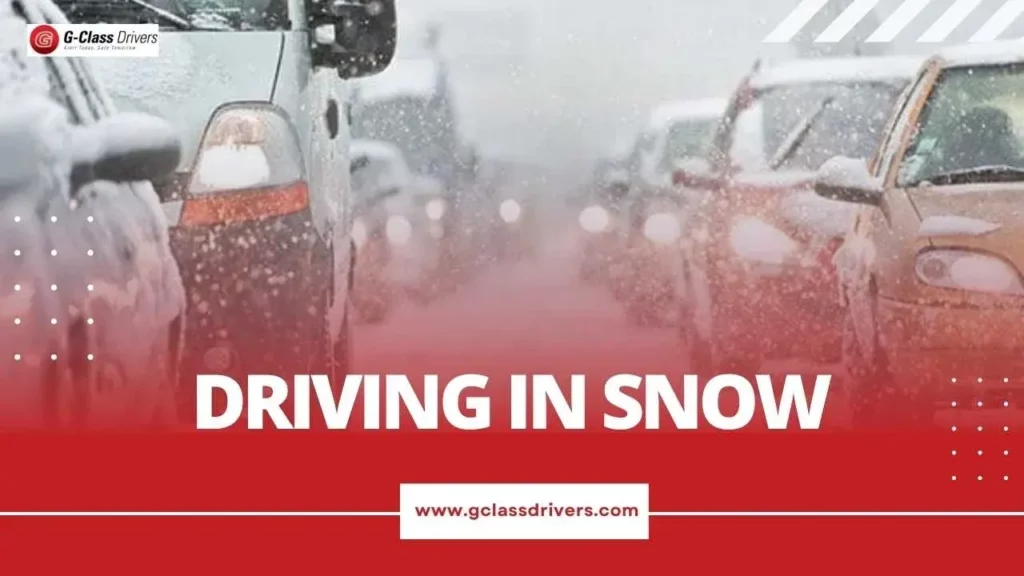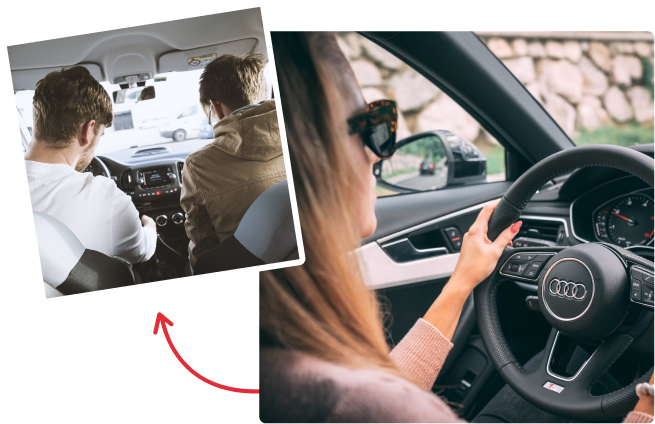Driving in snow can be challenging, but with the right tips, you can stay safe and confident on snowy roads. Whether you’re new to winter driving or just looking for a refresher, understanding how to drive on snow and ice is key to avoiding accidents. In this guide, you’ll find easy-to-follow snow driving tips that will help you stay in control, even in the toughest winter conditions. Let’s dive into the essential tips for driving safely during snow and ice.
Best Tips for Driving in Snow
Winter driving can be challenging, but with the right knowledge and precautions, you can drive safely. Whether you’re used to winter weather or it’s your first time driving in snow and ice, these simple tips will help you stay in control and avoid accidents.
1. Drive Smoothly
When driving in winter, it’s important to keep your movements smooth. Sudden turns or fast braking can cause your car to lose control.
- Tip: Think of driving as if you’re carrying a cup of coffee. You don’t want to spill it! Be gentle with the steering, gas, and brakes.
Smooth driving helps your tires grip the road better, reducing the risk of slipping.
2. Plan Your Moves
Always look far ahead when driving. This gives you more time to react to problems like icy spots or slow traffic.
- Tip: Slow down when you see a curve or intersection, and keep a safe distance from the car in front of you.
Looking ahead helps you prepare for what’s coming, keeping you safer on the road.
3. Pay Attention to Dashboard Alerts
If a warning light comes on while driving, it might mean your car’s wheels are slipping. Stay calm and act quickly. Ease off the gas pedal and let your tires regain traction. Avoid braking suddenly or turning too sharply.
Reacting to warning lights properly can help you keep control of your car.
4. Look Where You Want to Go
If your car starts skidding, it can be scary, but staying calm is important. Focus on where you want the car to go.
If your car skids:
- Front-Wheel Skid: Let go of the gas and steer gently.
- Rear-Wheel Skid: Turn the wheel in the direction your back end is sliding.
By steering in the right direction, you can regain control and stop the skid.
5. Use ABS Correctly
If you need to stop quickly, press the brake firmly. Your car’s Anti-lock Braking System (ABS) will help you stop safely. ABS helps prevent your wheels from locking up, which means you can still steer even when you brake hard.
Don’t pump the brakes just press them down firmly and hold.
6. Test the Road Is it Slippery?
Before you speed up or brake hard, test how slippery the road is. A gentle tap on the brakes will tell you if the road is icy. If the brakes don’t respond well, it’s likely icy. Slow down and drive carefully. Knowing the road’s condition can help you avoid accidents.
7. Don’t Rely Too Much on All-Wheel Drive
All-wheel drive (AWD) can help you get moving in snow, but it doesn’t help you stop or steer better. Even if your car has AWD, drive slowly and carefully. AWD is not a substitute for good winter driving habits. Always drive cautiously, no matter what kind of car you have.
8. Use Winter Tires
Winter tires are designed to give you better traction in snow and ice. They have special treads and rubber that work well in cold weather.
- Tip: If you live in a snowy area, invest in winter tires. They provide better control and can reduce the chance of accidents.
Winter tires are worth the investment for better safety.
9. Be Ready for Different Road Surfaces
Roads can change quickly in winter. You may go from dry pavement to ice, snow, or slush. Always be prepared to adjust your speed.
Tip: If you see snow or ice on the road, slow down and drive carefully. Avoid quick movements that could make you lose control.
Always adjust your driving to match the road conditions.
10. Plan Your Route
Before driving, check the weather and plan your route. If you’re unfamiliar with the area, know where the main roads are. Stick to highways or major roads, as they are more likely to be cleared of snow and ice. Planning your route ahead of time helps you avoid surprises.
11. Keep Essential Supplies in Your Car
It’s always a good idea to have some winter essentials in your car, especially on longer trips.
Essential Items:
- Snow shovel
- Extra warm clothes (gloves, hat, blanket)
- Ice scraper and brush
- Salt or sand for traction
- Tow rope
These items can help you stay safe if you get stuck or stranded.
12. Stay Calm During a Skid
If your car skids, it’s important to stay calm. Panicking can make things worse. Don’t slam on the brakes. Steer gently in the direction you want to go. Let the car regain traction before making any other moves.
Staying calm can help you regain control faster.
13. Clear Snow and Ice from Your Car
Before driving, make sure your car is clear of snow and ice. This improves your visibility and helps you drive safely.
- Tip: Scrape off the snow from your windows, mirrors, and lights. Don’t forget the roof, as snow can fall off and block your view or hit other cars.
Always clear your car completely before driving in winter.
14. Keep a Safe Distance
In winter, stopping distances are longer, so always keep more space between you and the car in front. Don’t tailgate. Stay at least 3 seconds behind the car in front of you, and more if conditions are really bad.
A safe distance gives you more time to react in case of an emergency.
15. Avoid Driving in Extreme Weather
If the weather is really bad, it’s safer to stay at home. Blizzards, heavy snow, and freezing rain can make driving very dangerous. If possible, delay your trip until the weather improves. Only drive when conditions are safe. Your safety should always come first, so don’t risk it in extreme conditions.
16. Drive Only When Necessary
Driving in snowy conditions should be avoided unless absolutely essential. According to statistics, 17% of car accidents occur during winter weather, highlighting the risks involved.
Even if you’re confident in your snow-driving skills, not everyone on the road may share your expertise. This increases the likelihood of accidents, even if you’re not at fault. Staying off the roads during bad weather is often the safest choice. Check weather forecasts and delay trips if conditions are severe
These winter driving tips will help you stay safe on icy, snowy, or slushy roads. By following these easy-to-remember precautions, you can drive with confidence and avoid accidents. Stay safe and drive carefully this winter!
Legal and Safety Considerations
- Obey Speed Limits: Speed limits are often too high for snowy conditions. Reduce your speed to match the road conditions and stay in control.
- Clear Snow from Your Car: Driving with snow on your car can be illegal in some areas. Clear it off completely to avoid fines and accidents.
- Know Local Laws: Some regions require winter tires or chains during specific months. Familiarize yourself with the laws in your area.
Conclusion
Driving in snow requires preparation, patience, and attention to detail. By following these tips and techniques, you can significantly reduce the risks of winter driving and ensure a safer journey. Remember, if conditions are too severe, staying off the road is often the best decision.
FAQs
What is the riskiest time to drive?
The riskiest time to drive is during rush hours, in poor weather conditions, or at night when visibility is reduced.
What is the best advice for driving in fog?
Slow down, use your low beam headlights, and keep a safe distance from other vehicles. Avoid using high beams as they can reflect off the fog and reduce visibility.
Which country is hardest to drive in?
Countries with challenging driving conditions, heavy traffic, or complex road rules, such as India, Italy, and Japan, can be considered difficult to drive in.
How do I get over my fear of snow?
Gradually expose yourself to driving in snow by practicing in low-traffic areas, taking winter driving lessons, and learning proper techniques for controlling your vehicle in snowy conditions.





